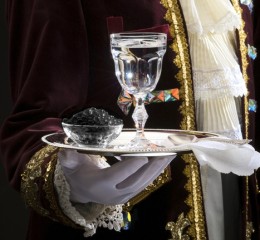


A brief history of caviar
Even if caviar today is the very symbol of a luxury food, it hasn't always been so. Some history: the sturgeon has always been considered a very special dish.
The Greeks and Romans roasted this large fish. Its eggs have been eaten for early 2000 years. However, caviar (as we know it today) is a much more recent food. Until the Middle Ages, around the Caspian Sea, in Persia, sturgeon's eggs were served crushed. It was an effective meat substitute. The means of preparing it – as well as conserving it by using salt – began to be perfected. As caviar became more delicate, it started appearing in the Court of the Tsars where it acquired its special nobility. The aristocracy enjoyed it … and Russian production began.
At the same time, the Russians developed a skilful method of using the less beautiful eggs. Dehydrated and compacted in a form of dense paté, it could be kept for a long time and be easily transported. This 'pressed caviar', as it is known, is still sold these days. In 1917, during the Bolshevik Revolution, the Russian aristocracy fled to escape the massacres. One of their main destinations was France … and those nobles brought with them their taste for caviar.
The French élites discovered caviar, enjoyed its taste and it became a symbol of luxury and delicacy. As caviar enhanced its reputation, the sturgeon was increasingly exploited to the point where the survival of the species was endangered. That's why, mid-20th century, the first attempts at farming occurred. Within 20 years, farmed caviar was successfully marketed and with ever-increasing quality. On 1 April 1998, the CITES Convention established fishing quotas to protect the wild species. /// The world's main exporting countries are Russia, Iran, Kazakhstan and China. The latter has developed high quality fish farming whose production increases considerably year on year.